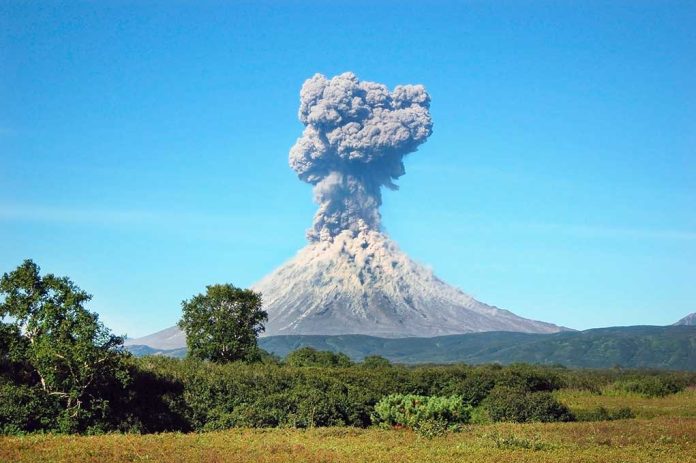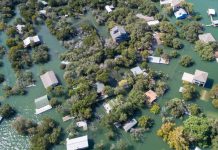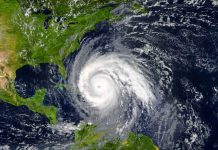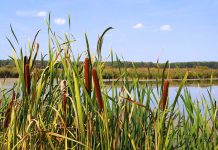
(TacticalNews.com) – As they are an opening in the Earth’s crust, often spewing forth lava/molten rock, gases, and debris to the surface of the planet, volcanoes can be extremely dangerous. Most of America’s active volcanoes are located in Oregon, Hawaii, Alaska, or California. But you should still prepare for a possible eruption no matter where you’re located.
With supervolcanoes like the one under Yellowstone National Park, which is ready to burst any day, volcanoes threaten more people than we realize. Molten rock and debris can travel upwards of 100 miles per hour, making it nearly impossible to outrun.
In addition, volcanic ash can actually travel hundreds of miles from the eruption site, sometimes causing serious health problems. Water supplies can easily be contaminated by falling ash and visibility can be seriously hindered even thousands of miles away. There is also a threat of toxic gas contamination in low-lying communities.
If you believe you’re within the radius of a potential eruption, now is the time to prepare. There is very little you can do in the moment during an explosion but try to evacuate, but a solid plan might help you survive. The more time you have to prepare the better off you will be.
Ask your local emergency services what they recommend you do in the event a volcano erupts; this will give you a good starting point. Gather any needed supplies: non-perishable foods, water, cleaning supplies, first-aid kits, and at least a few days of medications.
Then, create and practice an evacuation plan. Or, if you’re more at risk from ashfall, create a shelter-in-place plan. Remember that volcanic ash is extremely heavy as it builds up, and can collapse the roof of a house.
If you’re caught at the site of an eruption, avoid areas downwind, downstream, or downhill from the volcano. Lava almost always follows gravity, meaning you’re safer on high ground. If you have the supplies to do so, take shelter to avoid coming into contact with volcanic ash.
Follow the local authority’s evacuation orders — the earlier the better. Don’t stay to try and save your belongings or your home; this is one situation where leaving can truly become a matter of life or death. You can’t outwit or out-withstand the effects of a close volcano.
Do your best to avoid driving or going outside during heavy ashfall. If you are outside, be sure to minimize the risk of ash touching your skin and wear an N95 mask, or look at the CDC’s list of certified masks.
After the worst of the eruption passes, let people know you’re safe. Continue to avoid driving in heavy ash, as it will kick the ash up; this can clog and stall engines. Stay indoors until authorities say it’s safe to go outside.
Unless you have proper training, do not attempt to clean ash off of your roof. If you find yourself forced to do so, be sure to wear protective clothing. And be careful — ash makes surfaces slick, which poses a significant fall risk.
Don’t be surprised if there isn’t more going on than just a volcanic eruption at the same time, either. Disasters often come in waves, and eruptions can sometimes trigger nasty thunderstorms or bad weather. That’s why it’s important to know what to do when several disasters occur at one time.
Have you ever seen a volcanic eruption, or know someone who has? Reply to your email and share your story, we would love to hear from you!
Copyright 2021, TacticalNews.com



















